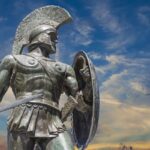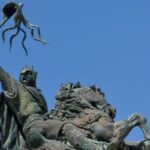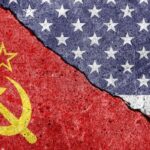We explain what the Punic Wars between Rome and Carthage were, their causes, consequences and main events of each of them.
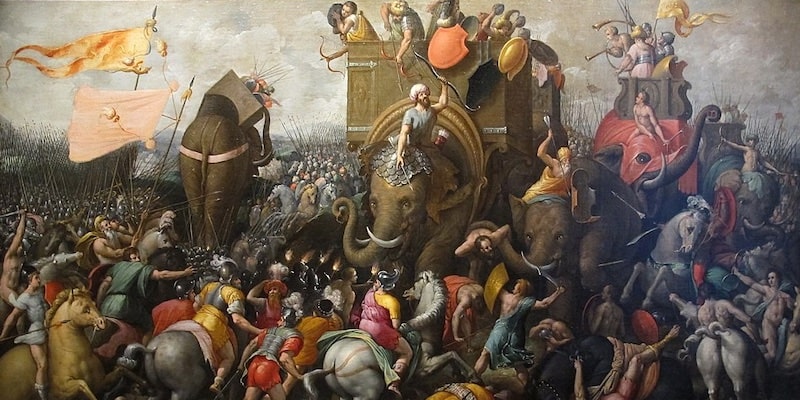
What were the Punic Wars?
The Punic Wars were three war conflicts that confronted the Roman Republic and the Empire of Carthage. Its name comes from the Latin term that the Romans used to refer to the Carthaginians and their Phoenician ancestors: punicus in singular and punici in plural.
These confrontations occurred between the years 264 BC. C. and 146 BC. c when Rome and Carthage were the two main powers in the Mediterranean. The Punic Wars were famous because, together with the Macedonian Wars and the Roman-Syrian War, they culminated in the victory of Rome and allowed Roman supremacy to be secured in the Mediterranean.
Key points
- The Punic Wars were three military conflicts between the Roman Republic and Carthage for control of the Mediterranean.
- The First Punic War (264-241 BC) broke out for control of Sicily and resulted in Roman victory and the imposition of reparations on Carthage.
- The Second Punic War (218-201 BC) was characterized by the Carthaginian invasion of Italy and their subsequent defeat at the Battle of Zama.
- The Third Punic War (149-146 BC) ended with the destruction of Carthage after a three-year siege and the end of Carthaginian influence.
Background of the Punic Wars
The antecedents of the Punic Wars must be sought in the expansion of the Roman Republic which around the 3rd century BC. C. had conquered the entire Italian peninsula, including Magna Graecia to the south. In this way, he controlled an important Mediterranean region.
For its part, A group of Phoenician settlers founded the city of Carthage on the coast of present-day Tunisia in North Africa, in the 9th century BC. C. This urban center grew and around 500 BC. C. became the capital of a commercial empire that owned the most powerful navy of the time and controlled the trade routes of the western Mediterranean.
The Romans had the most powerful land army of the time, at the service of their conquests in the Italian peninsula. From the origins of Rome, the patricians had adopted an imperial culture that allowed them to overcome the social tensions inherent to the Republic by directing aggression towards a common external enemy.
So, Rome was beginning to act like an emerging empire who distributed the spoils of his numerous conquests among his citizens.
Causes of the Punic Wars
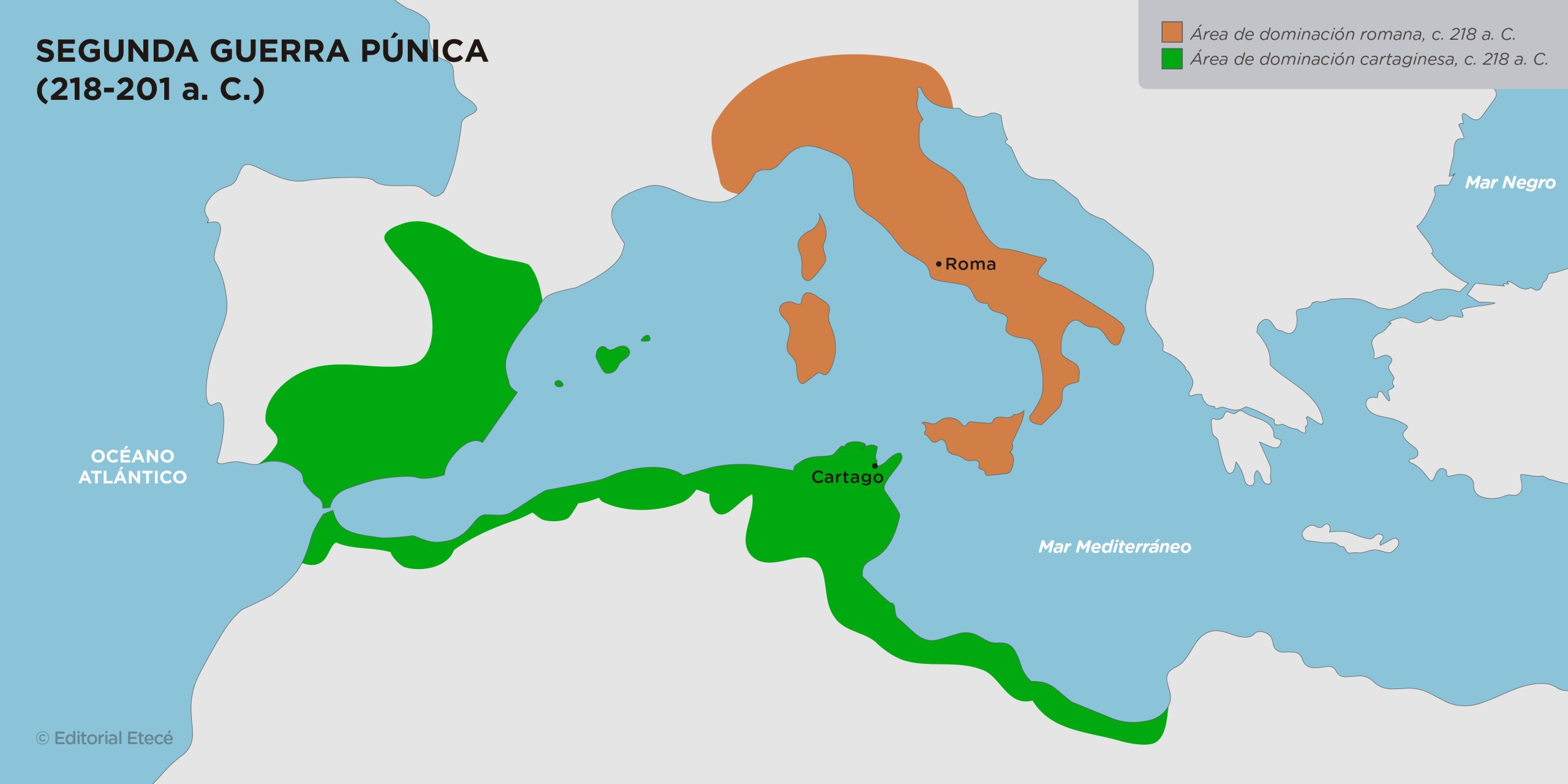
The confrontation between Rome and Carthage was probably inevitable, considering the threat that Roman expansion posed to Carthaginian commercial dominance of the Mediterranean.
However, The trigger for the conflict was the invasion of Messina, in northeastern Sicily. This Greek city was held by a group of mercenaries from the Italic people of the Oscans, who called themselves Mamertines. When attacked by the Syracusan tyrant Hiero II, who had the support of the Carthaginians, the Mamertines obtained no help from the Sicilian Greeks and therefore turned to Rome for help.
This fact caused Rome and Carthage to see each other as rivals for the first time although in a local and minor conflict. The defeat of Hiero II against the Romans and his negotiation with them led to the end of his alliance with Carthage.
Thus, in the following years, Rome seized formerly Carthaginian territories and built an important fleet, which determined that the Punic Wars became a long conflict for control of the western Mediterranean.
First Punic War (264-241 BC)
The first Punic war It was essentially a naval conflict which entailed a very high cost for both the Romans and the Carthaginians. It was born from the local conflict in Messina following the attack of the tyrant of Syracuse in 264 BC. C. The war began with the defeat of the Carthaginians in Agrigento. This defeat convinced them that they should take advantage of their maritime advantage, given that they had a larger and more experienced navy than the Romans.
However, Rome dedicated its entire production capacity to forming its first naval fleet and built around one hundred ships in less than two months. Thus he achieved his first naval victories in the battle of Milas (260 BC).
These new ships also had technological incorporations that allowed them to compete with the most agile and fastest ships of Carthage, such as the corvusa mobile gangway that allowed enemy vessels to board. From that moment on, Rome acquired techniques for boarding enemy ships that allowed it to use its almost unbeatable heavy infantry at sea.
The result was a succession of Roman victories except in the battles of the Bagradas Plains, in North Africa, and the Aeolian Islands and Drépano, in Sicily. In the midst of an almost uninterrupted series of defeats, Carthage signed in 241 BC. C. a peace treaty, in which Sicily was handed over to Roman rule.
This left Carthage deeply weakened. In 241 BC C. his mercenary troops rebelled, which unleashed the so-called Mercenary Wars. Rome took the opportunity to intervene quickly and also wrested control of Corsica and Sardinia from them in 238 BC. C. Since then, the Romans began to call the Sea Tyrrhenian Mare nostrum (“Our Sea”), a term that was soon applied to the entire Mediterranean Sea.
Second Punic War (218-201 BC)
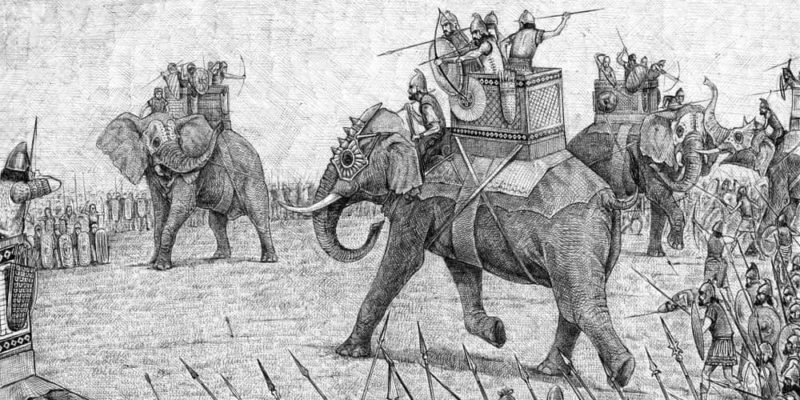
The Second Punic War is perhaps the best known of the three. It was unleashed by the Carthaginians who attacked the Spanish city of Sagunto ally of the Roman Republic. In command of the Carthaginians was General Aníbal Barca, considered one of the best military strategists in history.
This conflict had apparently been foreseen by Rome after the end of the First Punic War, given that it had continued to arm itself and had expanded into Hispania (the name given at that time to the Iberian Peninsula), where it had allied itself with traditional enemies of Carthage, despite the fact that he recognized the territorial limits of the Carthaginians in the region.
Hannibal ignored Rome's threats and led his army towards northern Hispania with the aim of invading Italy. Since the Roman fleet dominated that part of the Mediterranean, Hannibal decided to abandon Hispania and advance overland through the Alps towards northern Italy with its army made up of infantry, cavalry and war elephants.
Thus he crossed the Alps and won important victories on Italian soil, such as the battles of Ticino, Trebia, Trasimeno and Cannae. At Cannae, he annihilated two entire consular armies. The Carthaginians handed Rome the most humiliating defeat in its military history since the sacking of the Gauls in the 4th century BC. c.
However, the crossing of the mountains and the subsequent battles left Hannibal without the strength to besiege Rome, although with enough to resist his attempts at expulsion. Under the command of Hannibal, The army of Carthage was in Italy for sixteen years.
Meanwhile, the Romans also fought against Carthage in Sicily and Hispania, and at the same time against King Philip V of Macedonia, an ally of Hannibal, which unleashed the first Macedonian war in Greece.
This situation was resolved after the Roman victory in Sicily under the command of Marcus Claudius Marcellus, and in Hispania, under the command of the famous Roman commander Publius Cornelius Scipio, nicknamed “the African”.
This was followed by the intention to attack Carthage itself. To do this, Scipio landed in North Africa and allied himself with the Numidian prince Masinissa, who was at war at that time with the king of Numidia, Syphax, an ally of Carthage.
Hannibal then had to return to his land, where he was defeated in the battle of Zama in 202 BC. c. This new defeat against Rome deprived Carthage of its commercial colonies and forced her to sign a peace treaty in which her empire was reduced to little more than the city of Carthage.
Third Punic War (149-146 BC)
The third and last of the wars between Rome and Carthage It consisted of little more than the siege of the city of Carthage which culminated in its looting and total destruction.
The conflict was due to the Roman desire to appease the gradual commercial revival of Carthage. This coincided with the Carthaginians' announcement that, since they had already settled their debts imposed by the peace treaty of the Second Punic War, they considered themselves free from its terms.
In 149 BC C., Carthage went to war with Numidia and this gave a public reason for Rome to send an army to Africa arguing that Carthage was once again a threat. Rome imposed some conditions on Carthage that it was willing to accept, but it finally sparked war when it demanded that Carthage be demolished and its population moved further along the Mediterranean coast. Faced with the obvious refusal of the Carthaginians, who would thus lose their ability to trade, Rome declared war on them.
Thus began a first siege of the city of Carthage, which the Carthaginian population resisted tenaciously. But a second offensive led by Scipio Aemilianus, grandson-in-law of Scipio “the African”, defeated the Carthaginian defenses after three years of siege. Carthage was sacked and burned to the ground and its citizens captured and sold as slaves.
End of the Punic Wars and consequences
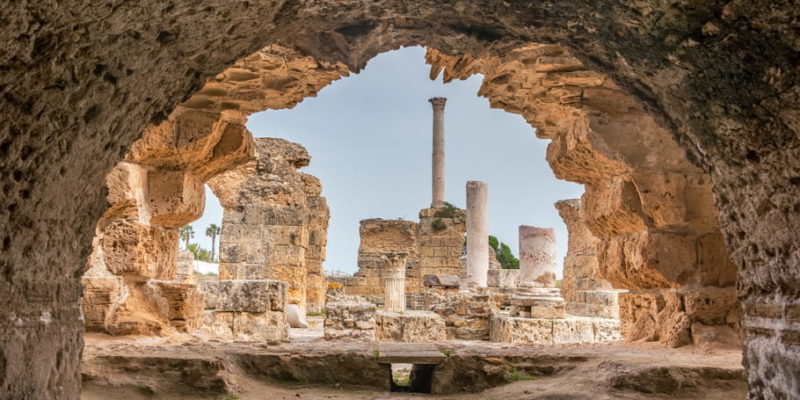
The end of the Punic Wars came along with its main consequence, which was the total destruction of Carthage and the absorption of its commercial empire by the Roman Republic. After also defeating the Macedonians and the Seleucid Empire in Syria, Rome became the supreme power of the Mediterranean Sea.
The history of the city of Carthage, its brave general Hannibal and its tragic disappearance endured over time and is still the source of inspiration for works of art and epic stories. Hannibal's tactics in the Battle of Cannae are usually studied in military academies and even served as a model for the Schlieffen Plan drawn up by the chief of the German General Staff before the start of the First World War.
References
- Britannica, Encyclopaedia (2023). Punic Wars. Encyclopedia Britannica. https://www.britannica.com/
- Cornell, T. & Matthews, J. (1993). Rome. Legacy of an empire. Folio.
- Mark, J.J. (2018). Punic Wars.World History Encyclopedia. https://www.worldhistory.org/
- Wikipedia (sf). Punic Wars. Wikipedia. https://es.wikipedia.org/

